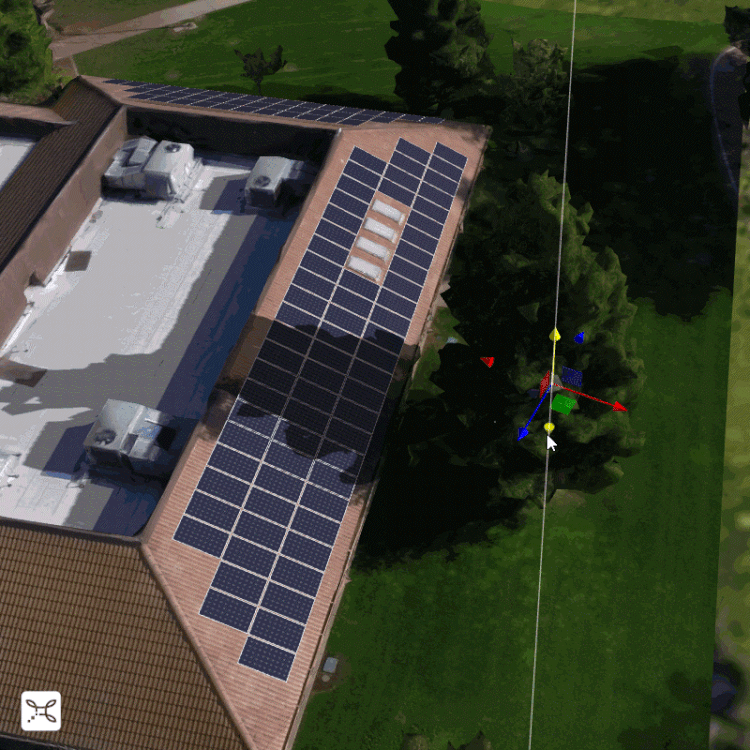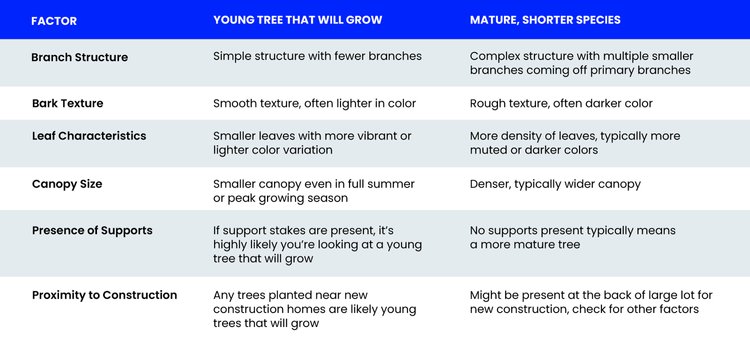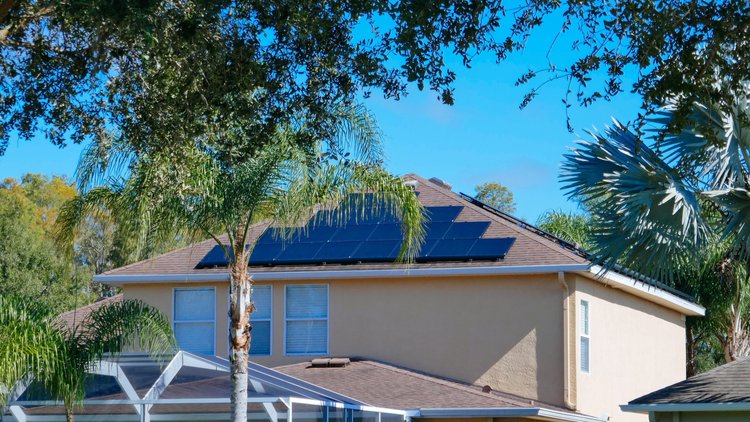Hot take: Do you know if the tree is young, or mature and a small species? If it has smooth, and often lighter bark texture, it is probably growing still and will cause more shading in the future.
Is that tree going to grow over time and block the solar array… or is it just a short species?
The answer to this question is essential for solar contractors. Without that knowledge, your production estimates (and shading analysis) could be way off.
It’s not fair to expect Surveyors to also become arborists and tree experts. However, there are some tell-tale signs whether a tree is young and growing versus a short species you don’t need to worry about.
Why identifying trees matters

Simply put: tree height matters over time.
If a tree’s canopy blocks a customer’s solar array, that means lower lifetime production. While a short tree might not be shading anything today, many species can grow taller than a typical home.
When you see a short tree, you need to confirm if it’s a shorter species or if it’s going to grow taller than the roof. This is critical for production estimates and shade analysis—particularly if you offer production guarantees.
Common features of young trees that will grow
As a Surveyor, it’s not your job to become a tree expert or arborist. However, being able to gut-check whether a tree will grow is a helpful piece of information to provide to Designers as they model solar production.
With that in mind, here are some common factors to look for to determine whether you’re dealing with a young tree or a small species.

These traits depend on the tree species, meaning no single characteristic will tell you whether a tree is young versus mature. Instead, look at this chart with holistic context—if a tree exhibits multiple characteristics of a young tree, for instance, it probably is. From there, you can either confirm the species using Scanifly’s list of common dormant deciduous trees, the Nature list of common US tree species, or the Arbor Day United States Tree Database. If you’re still not sure, you can consult with a professional tree surgeon or arborist.
If the tree is young and will grow, the next step is to include it in your solar production modeling (or talk with the homeowner about removing it). If you’re using Scanifly, you can add trees into the design context for modeling purposes. While this step might seem unnecessary, it’s critical for shading analysis and production estimates—both of which help you deliver higher quality, more confident pitch to customers. Given word of mouth is still a massive driving force in the growth of solar, ignoring this step could be perilous to company growth.






